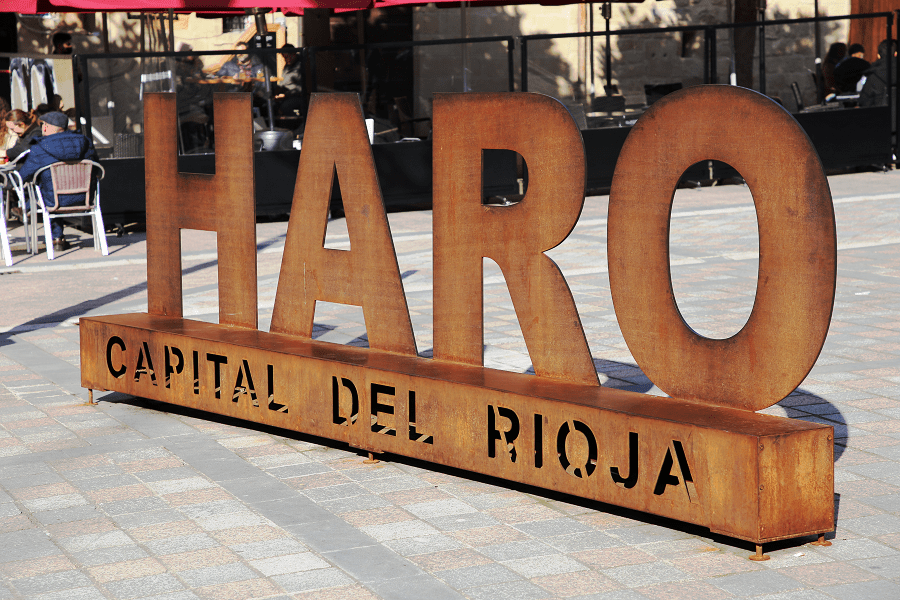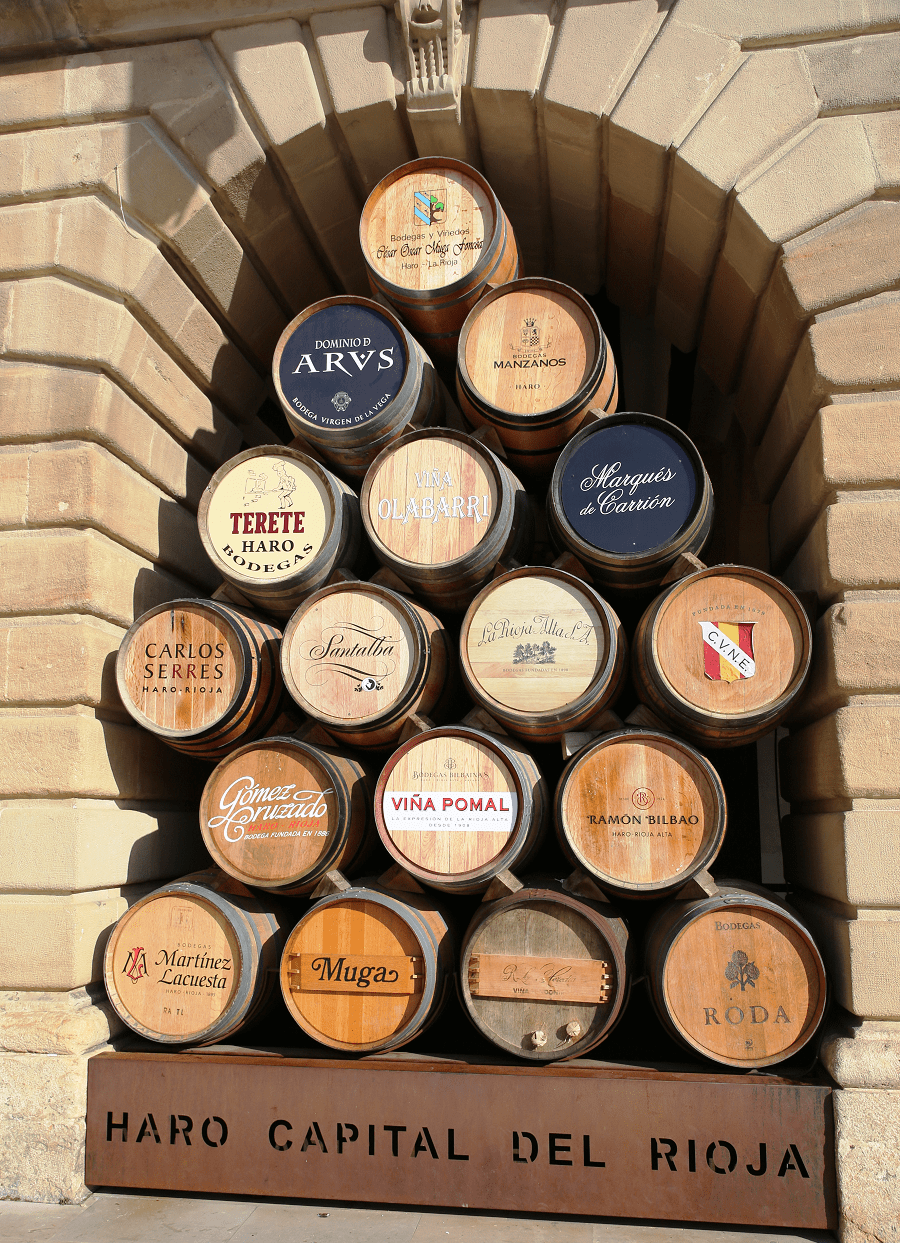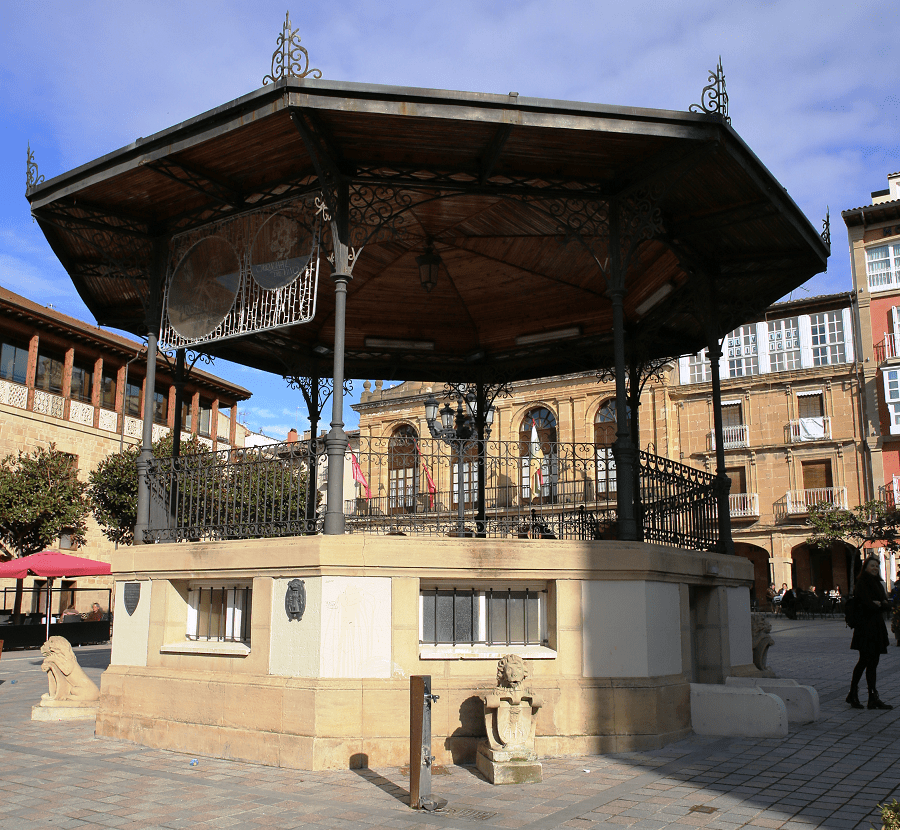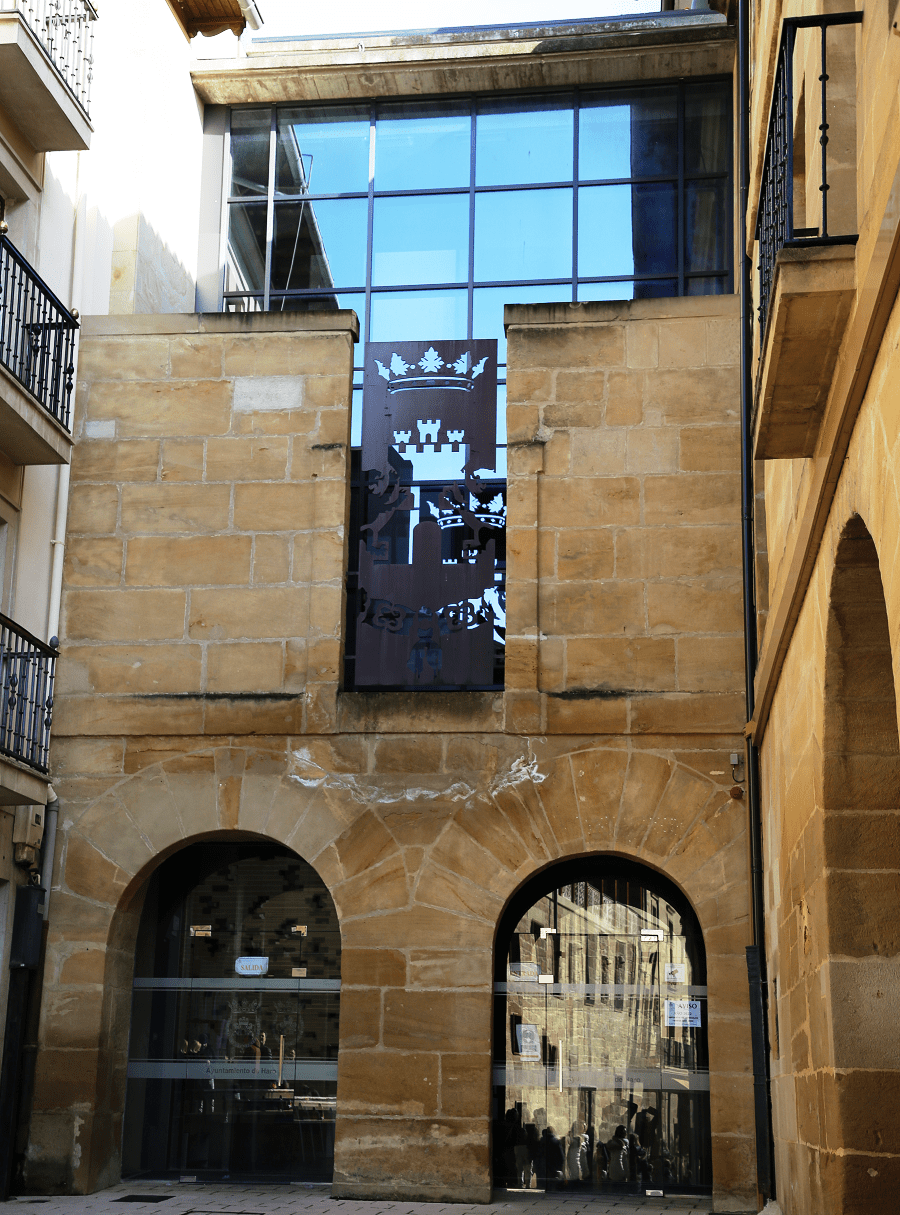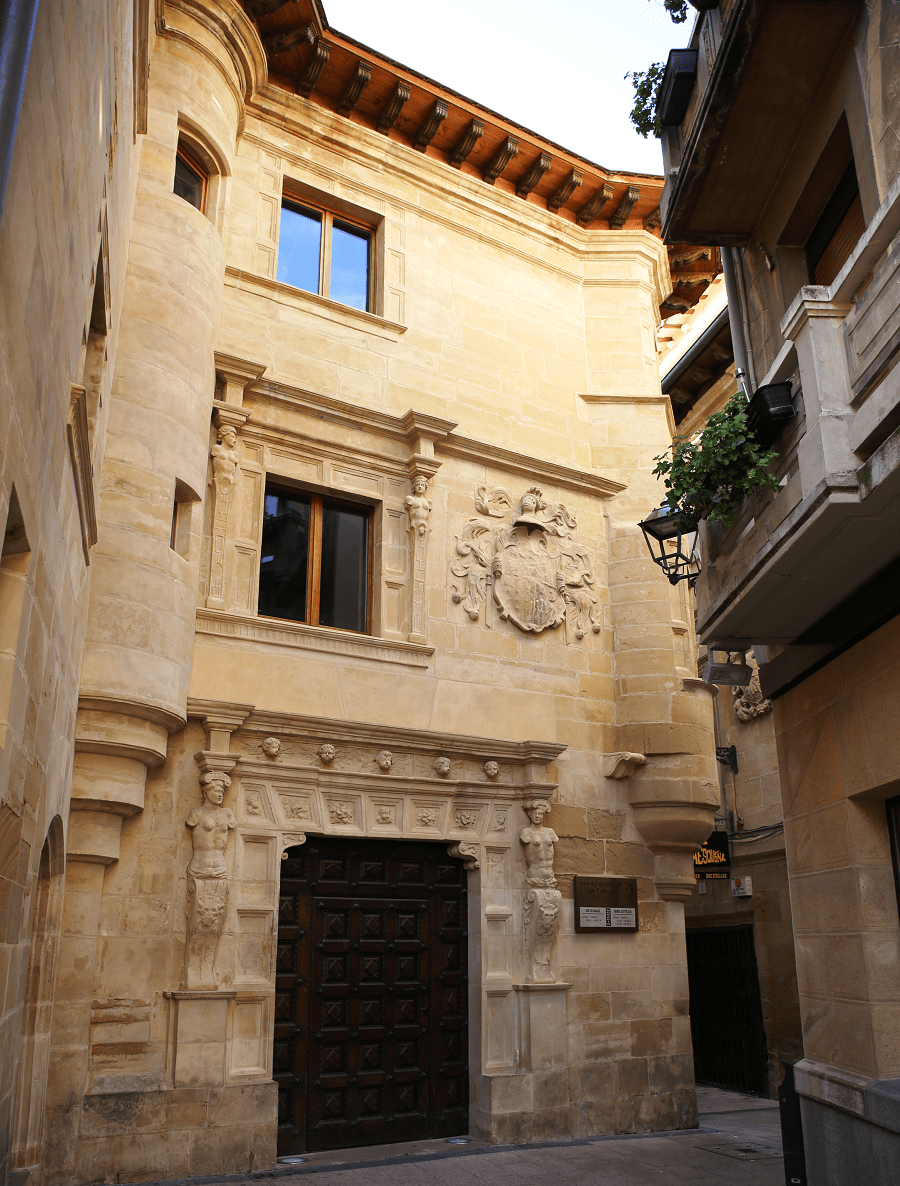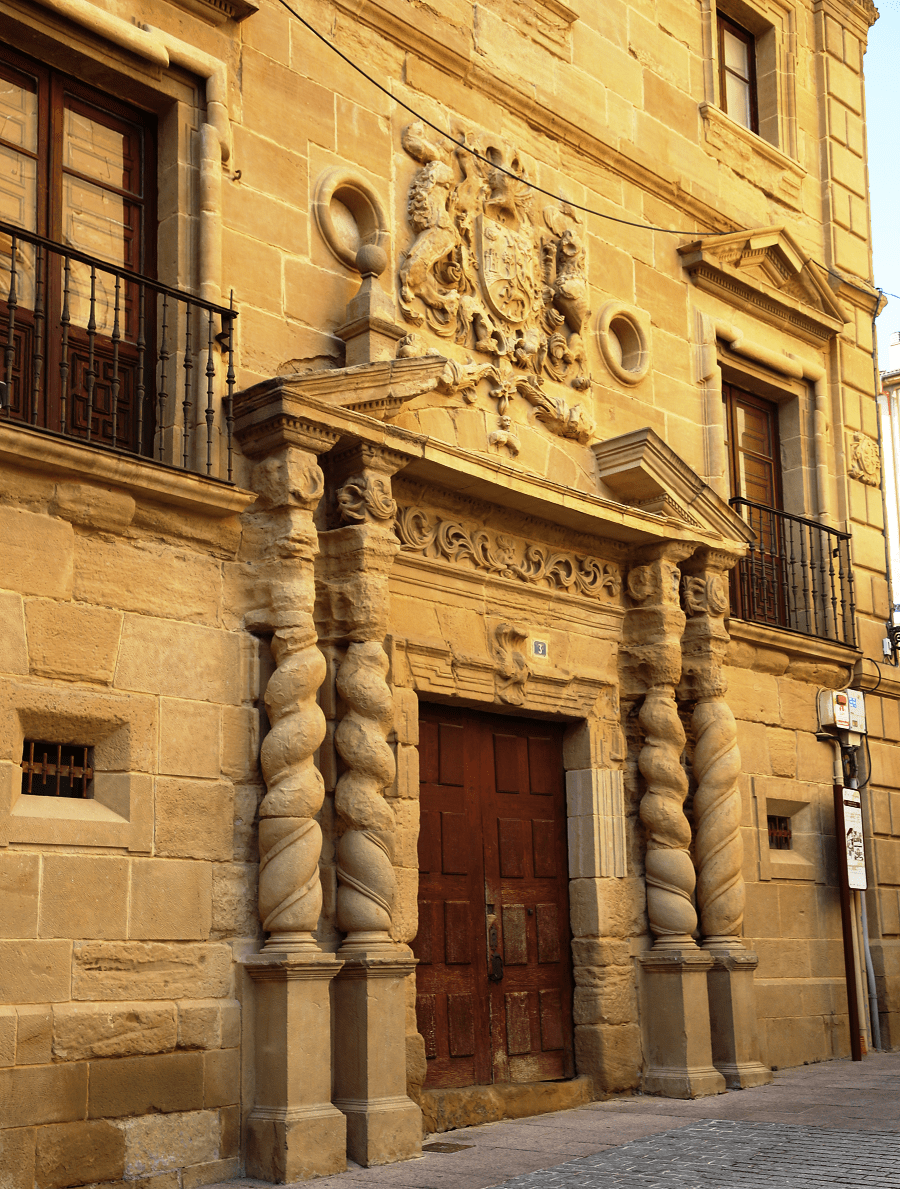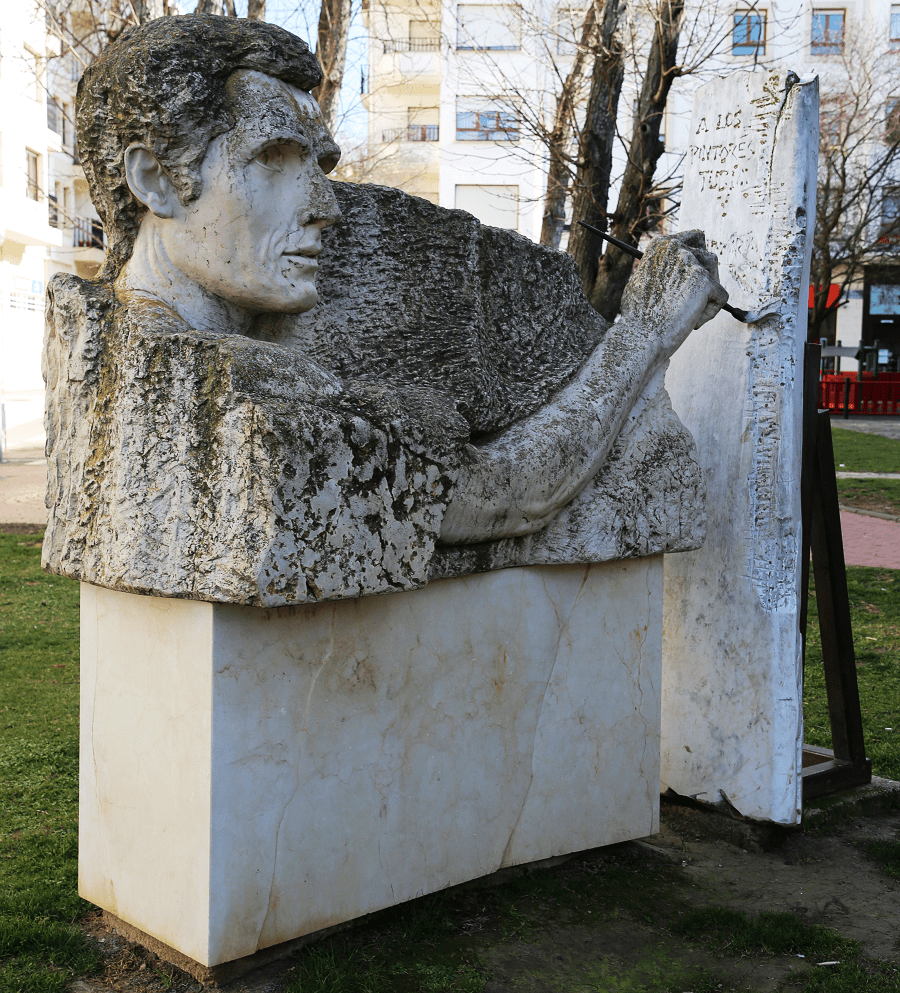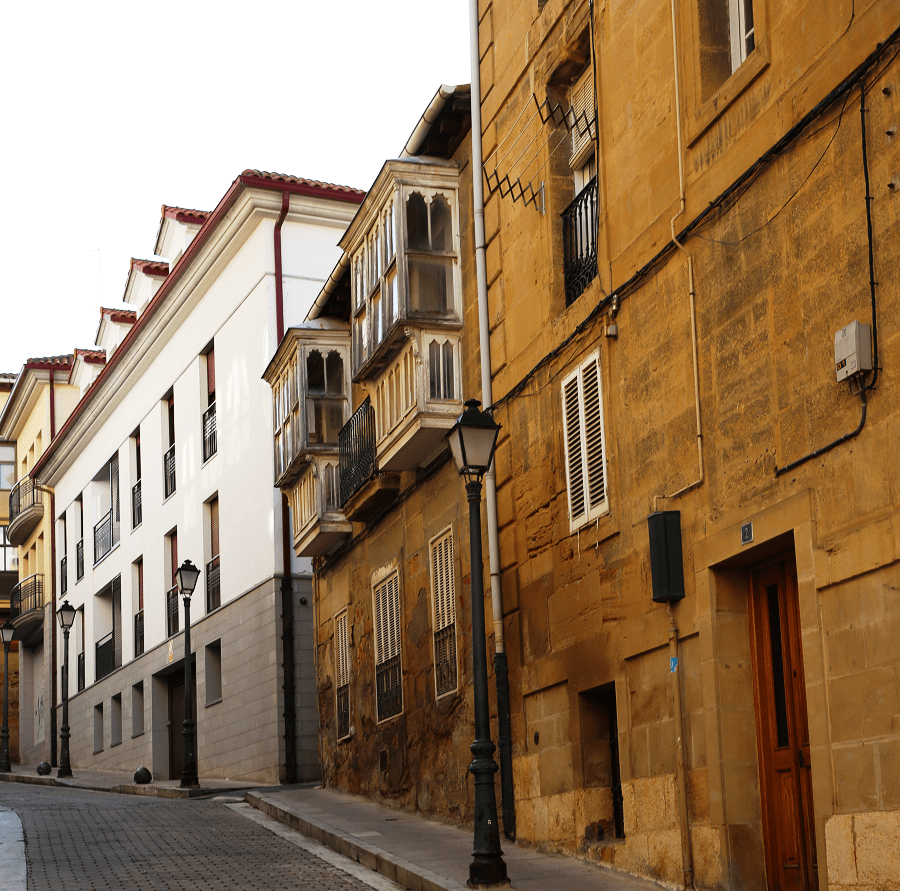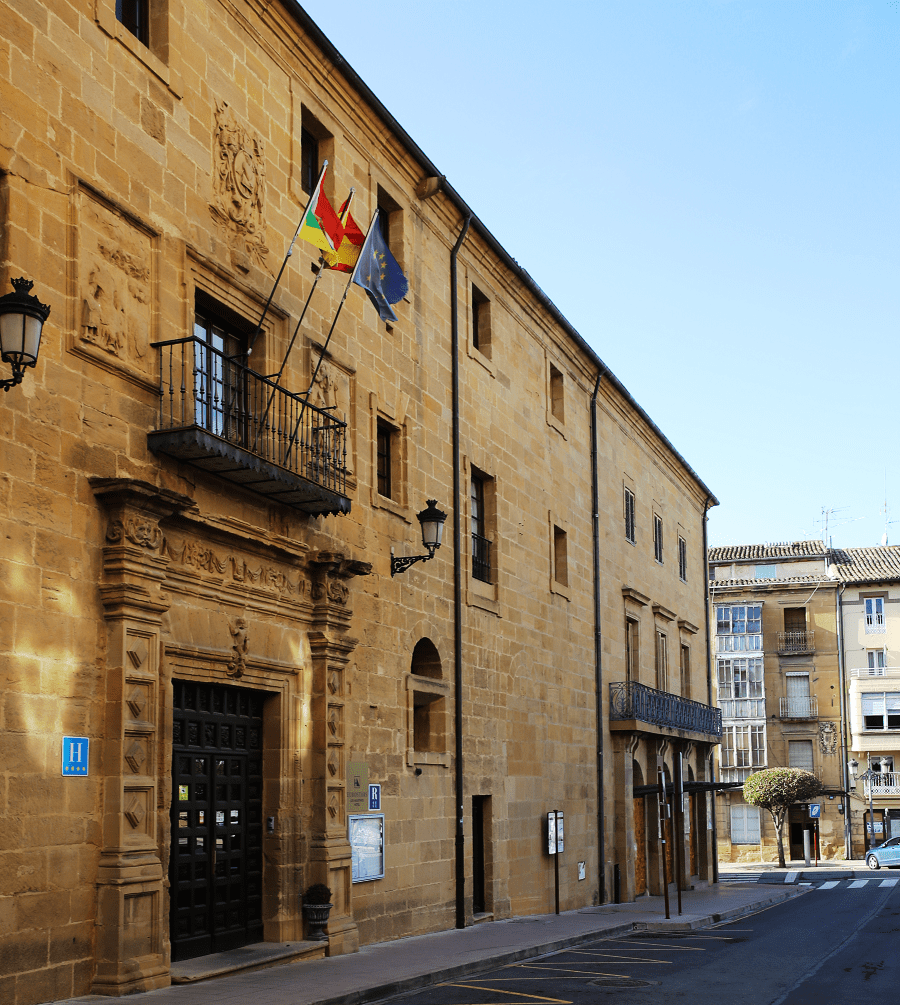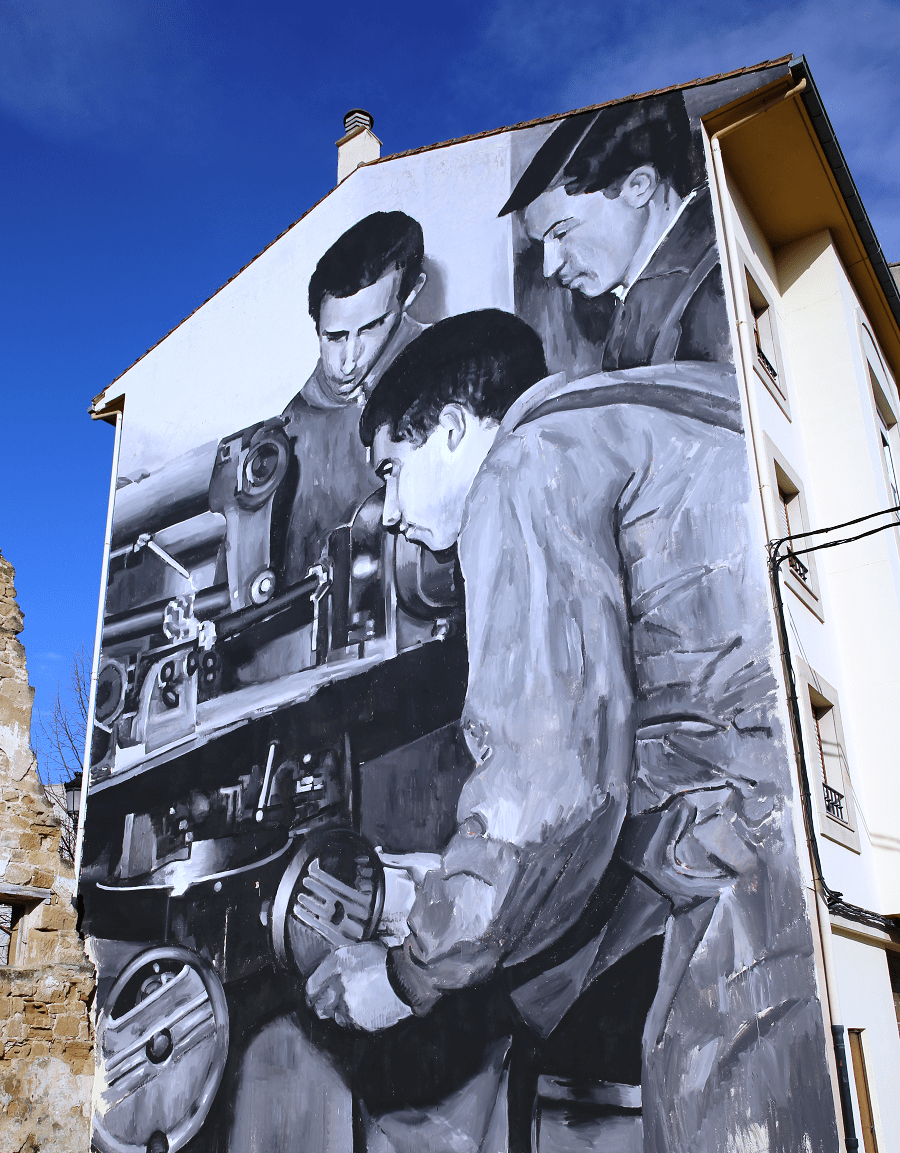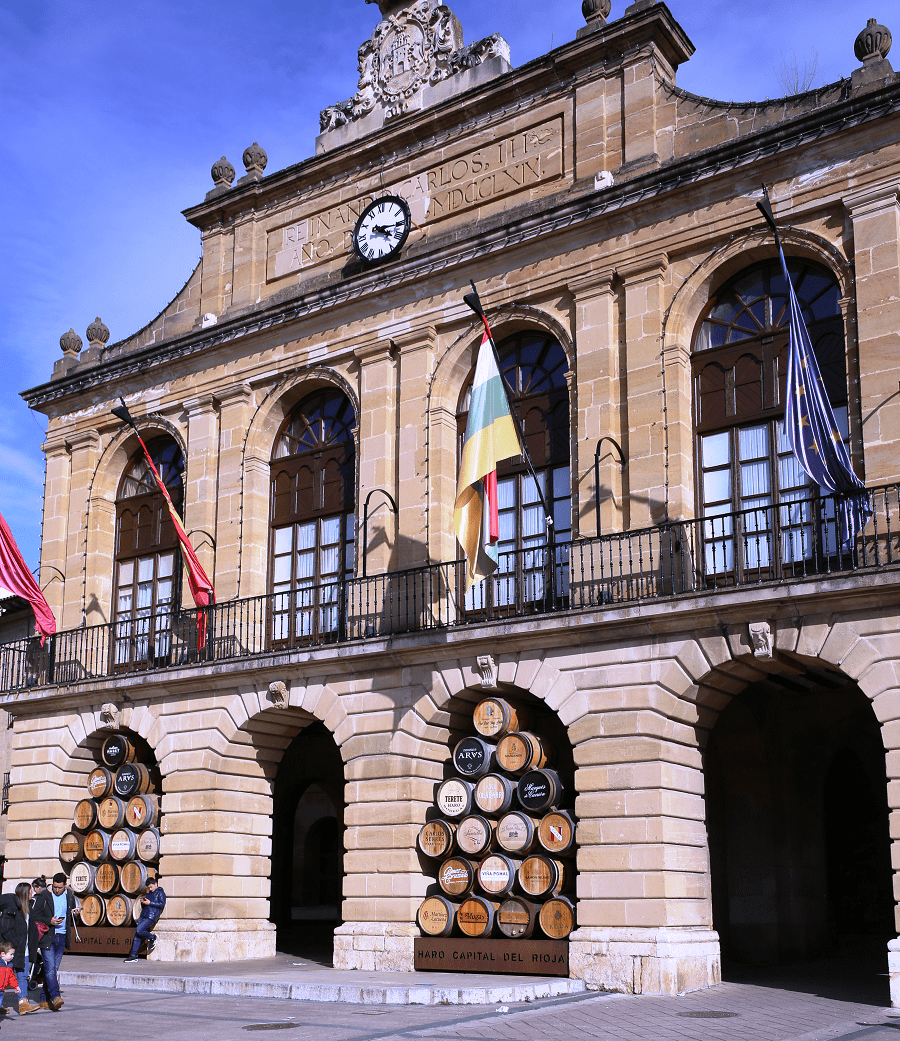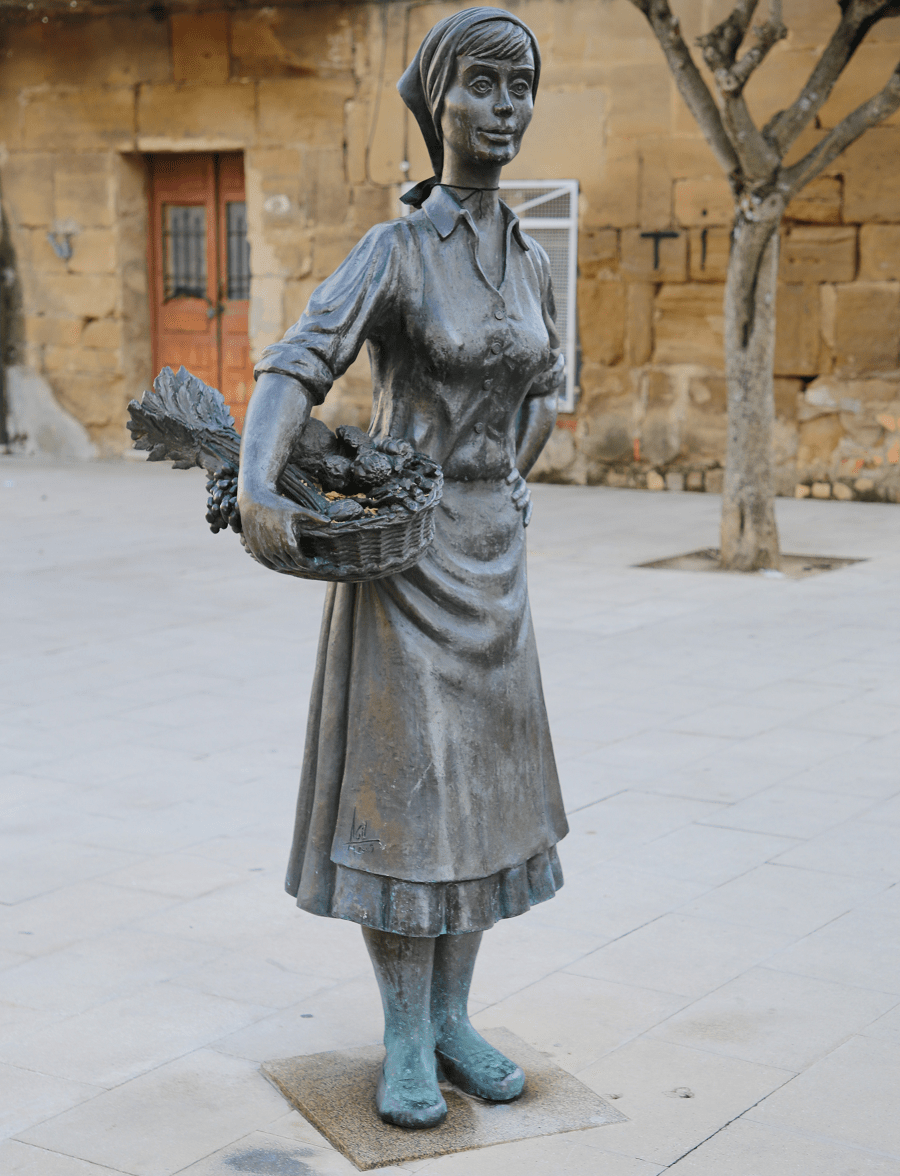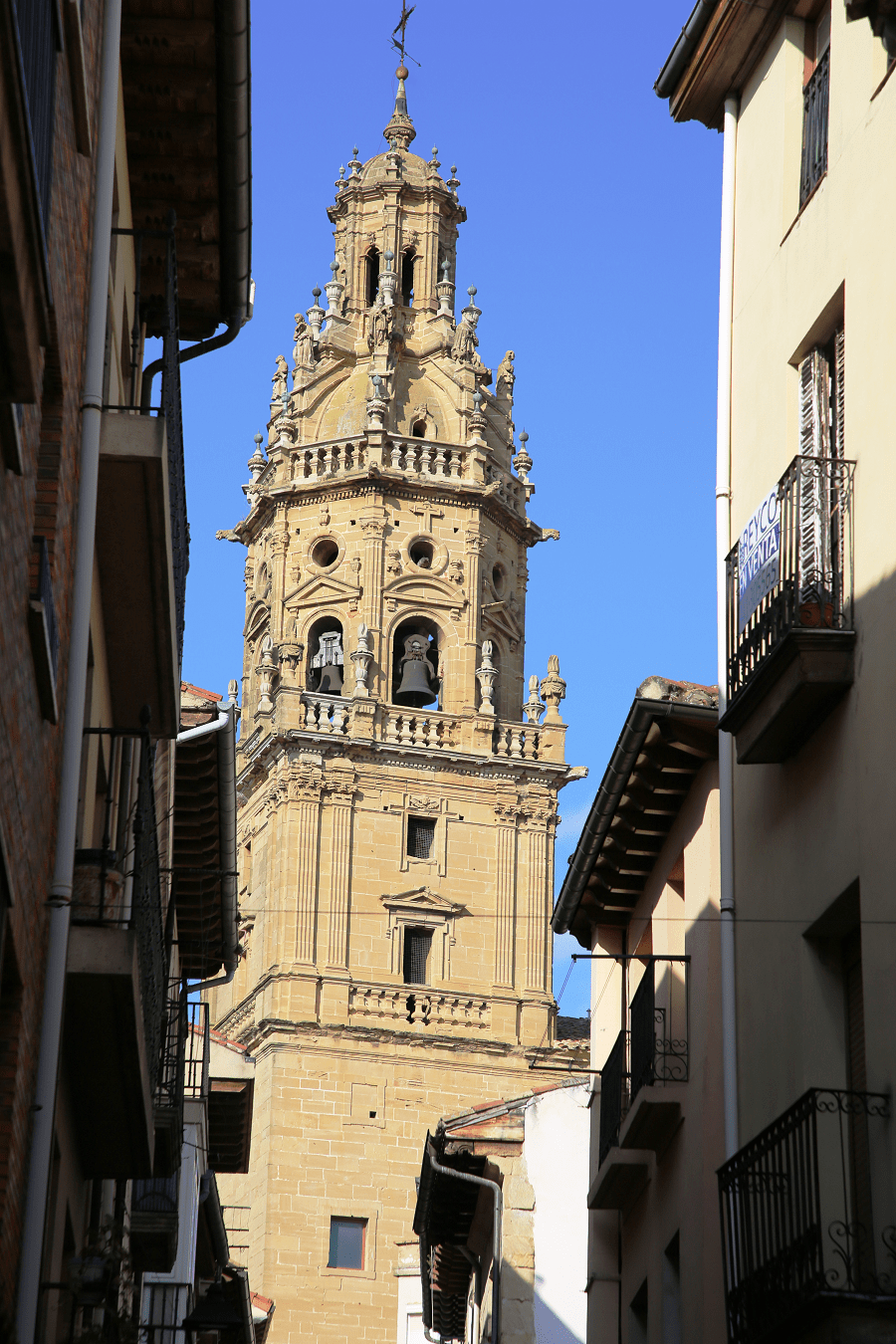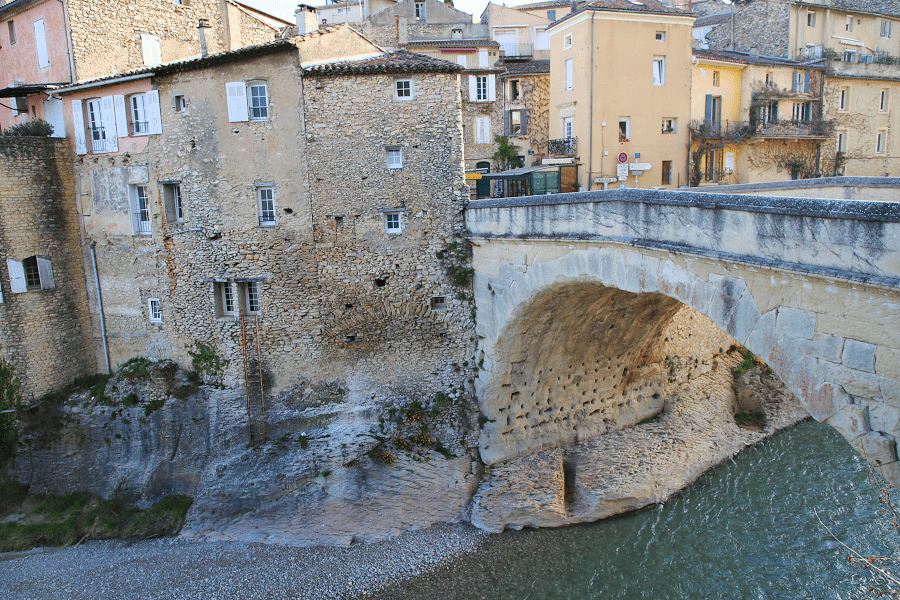Haro is a town and municipality, located northwest of the autonomous community of La Rioja, Spain. It borders Castile and León through the Montes Obarenes to the north and Basque country through the Ebro river to the east.
Its economic activity is mainly focused on viticulture and the production of quality wines within the Rioja Qualified Designation of Origin, and the wineries are also one of the main tourist attractions, receiving thousands of visitors annually.
It also has an important architectural and urban heritage, among which the main portal of the church of Santo Tomás stands out, the work of Felipe Vigarny, its numerous palaces and the old town, declared a Historic-Artistic Site in 1975.
Its traditional Battle of Wine stands out, a Festival of National Tourist Interest; the third oldest lantern procession in Spain; and one of the seven towns that, without being the capital of the province, had a branch of the Bank of Spain.
Main attractions
Parish Church of Santo Tomás Apóstol is located at the foot of the hill of La Mota (also called “La Atalaya”), the primitive nucleus of Haro, built under the protection of the Constables of Castile. It was built on a previous building, of which the main doorway is preserved, in the Plateresque style, the work of Felipe Bigarny, considered one of the most distinguished sculptors of the Spanish Renaissance, author, among others, of the chapel of the Constables of Burgos Cathedral. Declared a National Monument in 1931.
The Basilica of Our Lady of the Vega is located in the place of the Vega. It is believed that it was built in the 10th century, after the image of the Virgen de la Vega arrived in the city. The baroque-style building is the result of several extensions, the last being in 1703. The baroque altarpiece of the main altar built in 1740 by Santiago del Amo stands out. The image of the Virgen de la Vega, in Gothic style, dates back to the 14th century.
Hermitage of San Felices de Bilibio is located in the Riscos de Bilibio, 4.5 km from Haro, on the so-called Conchas de Haro, from where the Ebro River begins its middle course. In the annual popular vote, The Best Corner of the Repsol Guide in 2014 it won first place along with the Alcántara bridge in Extremadura.
Haro’s town hall is located in Plaza de la Paz, No. 1. It was built in the 18th century in a neoclassical style under the supervision of Ventura Rodríguez. At the top of the front wall is the baroque-style city coat of arms and the inscription: “REINANDO CARLOS III / AÑO DE MDCCLXIX” (Year 1769). In October 1857 a clock was placed on top of the main façade.
City entrance arches
The old town was completely walled and three doors gave access to it, of which two of its arches are preserved:
Puerta de San Bernardo: located in the Plaza de la Paz.
Puerta de Santa Bárbara: located on Calle Siervas de Jesús.
Puerta de Santo Tomás: it gave access to the street of the same name and today it no longer exists. Formerly known as Bortares gate.
Palaces
Bendaña Palace, also called Paternina Palace: Located on Calle San Martín No. 1. Built in the 16th century, it is in the Plateresque style.
Palacio de los Salazar: it has a façade on Calle de la Paz No. 4 and Calle Siervas de Jesús No. 3. From the 18th century it is built in ashlar masonry from the Spanish Renaissance.
Palacio de los Condes de Haro: Located in Plaza de la Iglesia, No. 3. Dating from the 17th century, it has a Renaissance floor plan and Baroque decorations.
Palacio de Tejada: Located on Lucrecia Arana street. From the 18th century it is Rococo style.
Palace of the Constables: Located on Calle San Roque.
Palacio de las Bezaras: Located on Calle de la Vega. From the 17th century, it is a branch of Caja Rioja and a cultural center.
Palace of the Plaza de la Cruz: Located in Plaza de la Cruz. From the 18th century.
Museums
Museum of contemporary art: located in the Medieval Tower of the Plaza de la Paz.
Rioja Wine Interpretation Center: it is located in the Oenological Station. It aims to spread knowledge about the cultivation of the vine and the production of wine with interactive information, panels and video projections. It also organizes guided tastings.
Way of St. James
The Camino de Santiago passes through the municipality along the so-called Camino del Interior or Basque-French, which, coming from various areas of France via Irún, runs through Andoáin, Beasáin, Zalduendo de Álava, Vitoria, La Puebla de Arganzón, entering La Rioja through the Conchas de Haro towards Briñas, Haro, Zarratón, Cidamón, San Torcuato and Bañares, converging in Santo Domingo de la Calzada with the French road -which is the best known-, from where it will continue through Belorado towards Santiago de Compostela.
The city has a hostel for pilgrims with 28 beds, inaugurated on May 6, 2007, although it began to function before Easter of the same year. It is managed by the Asociación Amigos del Camino Haro – Rioja Alta.
Best restaurants
There is one Michelin restaurant in the city: Nublo, Plaza de San Martín 5, 49 – 79 EUR • Modern Cuisine (one star).
How to get to?
From Logroño 36 min (47.7 km) via AP-68
From Madrid 3 hr 35 min (336 km) via A-1
Main information
Area: 40 km² (municipality)
Coordinates: 42°34′37″N 2°50′46″W
Population: 11 633
Languages: Spanish
Currency: Euro
Visa: Schengen
Time: Central European UTC +1



